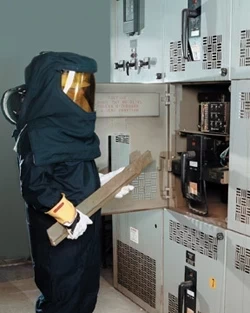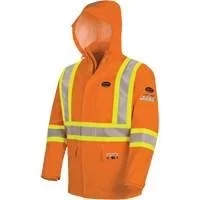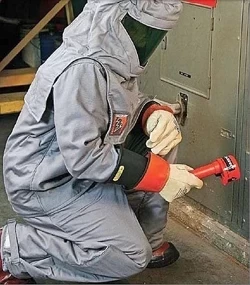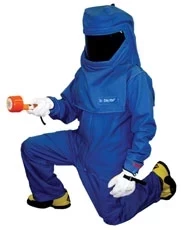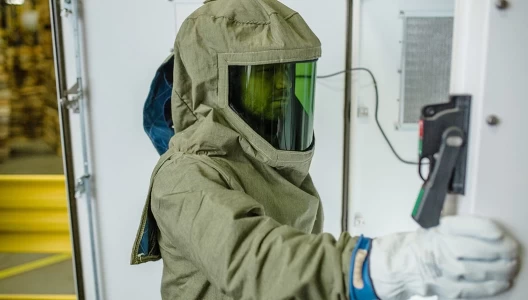Balancing Comfort and Protection in Arc Flash PPE

Personal Protective Equipment (PPE) for arc flash protection is designed to shield workers from the severe thermal effects of arc flash incidents, which can cause devastating burns and other injuries. However, achieving the right balance between providing sufficient protection and ensuring wearer comfort presents a significant challenge in PPE design.
Arc flash personal protective equipment (PPE) serves a life-saving purpose — shielding workers from the potentially devastating thermal effects of an arc flash. However, the inherent challenge lies in achieving the necessary level of protection without compromising worker comfort and dexterity to the extent that proper PPE use is discouraged. Manufacturers and safety professionals continuously navigate this delicate balance.
Visit Our Arc Flash Study Course
The Costs of Discomfort
- Improper Wear: When arc-rated suits are too hot, bulky, or restrictive, workers are more likely to avoid fastening garments completely, leave sleeves unbuttoned, or even remove PPE when they believe they're unobserved.
- Reduced Productivity: Discomfort distracts workers, leading to mistakes and slower task completion. Overheating can necessitate more frequent breaks, hindering efficiency as workers need to leave the area to fully remove PPE.
- Heat Stress Risks: In warm environments, heavy arc-rated garments can contribute to heat exhaustion or heat stroke, creating an additional safety hazard.
- Negative Perception of Safety: When PPE is seen as a hindrance rather than protection, it undermines the overall safety culture within an organization.
Challenges in PPE Design for Arc Flash Protection
Achieving Adequate Protection
The primary function of arc flash PPE is to protect the wearer from the high temperatures and explosive forces of an arc flash event. This requires materials that can withstand extreme heat and resist ignition, melting, or breaking open, which are typically thick, heavy, and rigid.
Ensuring User Comfort
For PPE to be effective, it must be worn correctly and consistently. This necessitates design considerations that enhance comfort, including weight, flexibility, breathability, and ergonomic fit. PPE that is too bulky, hot, or restrictive can lead to non-compliance, as workers may avoid wearing it properly or at all.
Technical Considerations in Arc Flash PPE Design
Material Innovation
Advances in material science have led to the development of fabrics that provide high levels of thermal protection while being lighter and more comfortable. These materials often combine flame-resistant properties with improved breathability and flexibility, enhancing wearer comfort without compromising safety.
Ergonomic Design
The ergonomic design of PPE plays a crucial role in usability and comfort. This includes considering the fit and mobility of the garments, ensuring that they allow for natural movement and do not impede the performance of work tasks. Proper ergonomic design reduces the physical strain on the wearer, increasing the likelihood of compliance.
Balancing Act: Protection Versus Comfort
Trade-offs in PPE Design
Designing arc flash PPE involves balancing the trade-offs between protection and comfort. Higher levels of protection often require heavier and less comfortable materials, but modern technologies are increasingly able to mitigate these drawbacks.
User-Centric Design Approach
A user-centric approach to PPE design, which involves feedback from end-users, can lead to innovations that better meet the needs of workers in terms of both safety and comfort. This approach helps manufacturers understand the practical challenges faced by workers and adapt the PPE design accordingly.
The Benefits of Balanced PPE Design
Enhanced Safety Compliance
When PPE is both protective and comfortable, workers are more likely to wear it consistently and correctly, leading to higher levels of safety compliance and reduced risk of injuries.
Improved Productivity
Comfortable PPE can also contribute to improved productivity. Workers who are not distracted or hindered by uncomfortable equipment can perform their tasks more efficiently and with greater focus.
Positive Safety Culture
Investment in high-quality, comfortable PPE demonstrates an organization’s commitment to worker safety, contributing to a positive safety culture where protection is prioritized and valued.
Conclusion
Balancing comfort and protection in arc flash PPE design is essential for ensuring both the safety and compliance of workers exposed to arc flash hazards. Advances in materials and design innovation continue to improve the capabilities of PPE to meet these dual needs effectively. By prioritizing both protection and comfort, organizations can enhance safety outcomes, ensure regulatory compliance, and promote a culture of safety within the workplace.

